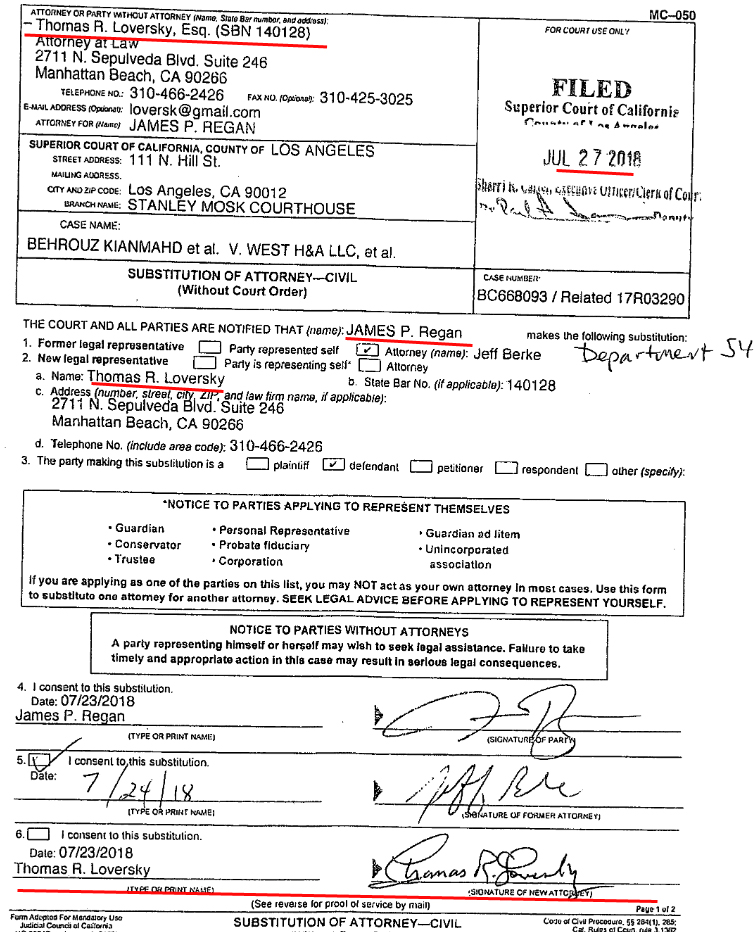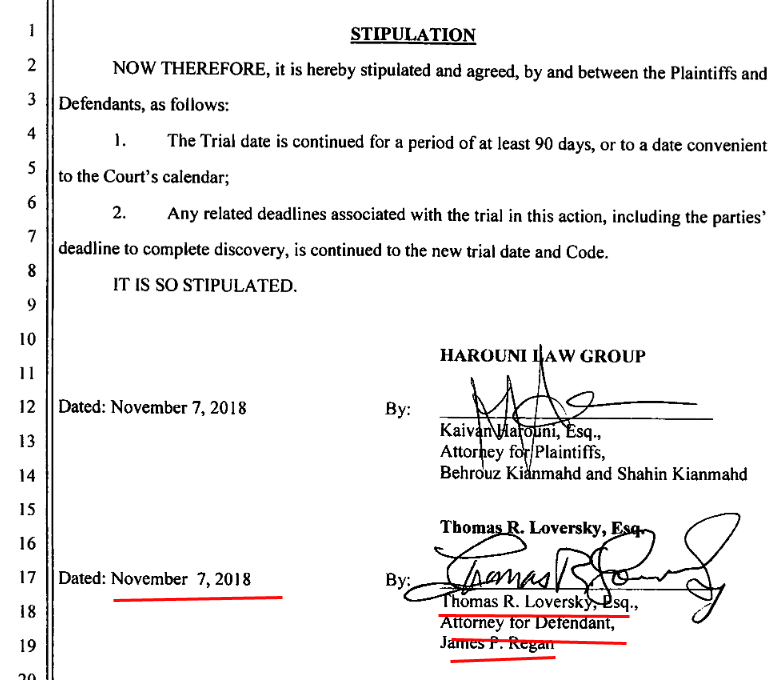Tom Loversky was admitted to the California Bar in 1989. Bar Number 140128.
Thomas Robert Loversky
2711 North Sepulveda Boulevard # 246
Manhattan Beach, California 90266
Law School: Loyola Law School
Tom Loversky was reportedly previously subject to California State Bar action and not allowed to practice law for a short period of time.
The reason appears to be a failure to comply with continuing education requirements. Loversky's official State Bar page shows an entry reflecting to us a time when he was not allowed to practice law in California:

In Business and Professions Code section 6070 the California legislature directed the State Bar to request that the Supreme Court authorize the State Bar to create and enforce a mandatory continuing legal education program for attorneys. That apparently happened. Every three years attorneys must complete at least 25 hours of continuing education.
The California State Bar has issued rules and regulations for the continuing education (MCLE) requirements. Our understanding:
Rule 12.1 says there are four different types of noncompliance:
1. Failing to complete the education requirement.
2. Failing to make an affirmative showing of compliance with the MCLE rules.
3. Failing to provide satisfactory proof of compliance.
4. Failing to pay non-compliance fees as required.
Rule 12.2 then says an attorney not in compliance with the MCLE rules:
- Receives a notice of noncompliance
- Is told what they must do to get into compliance,
- Is given at least 60 days to get into compliance, and
- Are told failing to comply by the deadline means they will not be permitted to practice law until proof of compliance is received by the Bar.
It seems noteworthy an attorney is told both the deadline for compliance and the consequence of not complying. They know the date they will be removed from being an active attorney.
Rule 13.1 says a lawyer failing to comply with the 60 day notice shall become an inactive member of the Bar.
Rule 2.70 of the California State Bar rules says the MCLE compliance period is 3 years.
Thus, our understanding is an attorney has three years to complete their education requirement.
If they fail to do so they get a 60-day notice of the violation and how to correct it.
Only after three years, and then after getting a violation notice, and then after at least 60 more days, can an attorney lose their ability to practice law.
Per the State Bar record and Bar rules, this is our understanding of what happened to attorney Tom Loversky:
He was in violation of State Bar rules, per Supreme Court and legislation enactments, with respect to continuing education requirements.
Loversky had three years to comply.
He would have been given notice of the noncompliance per Bar rules and given at least 60 days to correct the matter.
After the additional 60 days the State Bar revoked his status as an active attorney.
State Bar Rule 2.91 says not complying with the MCLE notice means the attorney is "involuntarily enrolled as inactive. An inactive licensee is not eligible to practice law".
That is what Loversky's State Bar record indicates to us. For a period of time he was not eligible to practice law.
It appears to us an attorney who has been involuntarily placed on inactive status, and not eligible to practice law, but who nonetheless continues as if he were an active attorney, may be engaged in the unauthorized practice of law and criminal conduct.
Business and Professions Code section 6125 states:
No person shall practice law in California unless the person is an active licensee of the State Bar.
We believe that encompassed Thomas Loversky. He was apparently involuntarily removed from active status by the Bar.
Business and Professions Code section 6126(b) states:
Any person who has been involuntarily enrolled as an inactive licensee of the State Bar ... and thereafter practices or attempts to practice law, advertises or holds himself or herself out as practicing or otherwise entitled to practice law, is guilty of a crime punishable by imprisonment pursuant to subdivision (h) of Section 1170 of the Penal Code or in a county jail for a period not to exceed six months.
This raises the question: after being forced into inactive status, did attorney Loversky do any of the following criminal acts?
- Practice law
- Attempt to practice law
- Hold himself out as practicing law
- Hold himself out as entitled to practice law
Consider Los Angeles County Superior Court Case BC668093 - BEHROUZ KIANMAHD ET AL VS WEST H&A LLC ET AL .
Tom Loversky is listed as defendant James Regan's attorney

Then there is this interesting court docket during the time period attorney Loversky was not an active attorney November 7 through 18:

There are no case entries during this period of time reflecting any notice to the court or parties that Mr. Loversky was no longer allowed to practice law and no longer lawfully represented James Regan. That suggests to us Loversky did not inform the court he was no longer allowed to practice law.
It appears to us he let the court believe he was an active attorney and entitled to practice law. When in fact he was not.
The docket reflects there was case activity during this time period.
Also interesting is the stipulation Loversky signed on November 7th - when he had been banned from practicing law:

In our opinion he also should not have been on a proof of service for other attorneys and the court during this time period.
His involuntarily removal from being able to practice law and lawfully sign a stipulation for a client seems to us something important a judge and opposing attorney would need to know.
Another way of looking at this, is whether by omission - if he did not inform the court of his inactive status - the attorney was misleading the court.
If the stipulation was invalid has he harmed his client? What harm has there been to the judicial system?
You can draw your own conclusions from the court docket and stipulation, but it could raise the question of whether Loversky committed a potential crime by, at a minimum, continuously holding himself out as entitled to practice law in an active lawsuit.